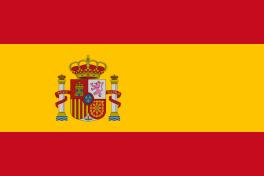Donate to Support Supercluster
Your support makes the Astronaut Database and Launch Tracker possible, and keeps all Supercluster content free.
SUPPORTSupercluster on Patreon
Your support makes the Astronaut Database and Launch Tracker possible, and keeps all Supercluster content free.
SUPPORTThis goes
to space
ESA Rideshare
Experiments on board
Four experiments, ranging in mass from 0.15–12 kg, will be fixed to the platform on top of the mass dummy. These experiments will return valuable data up to the end of the mission when the upper stage reenters Earth’s atmosphere.
PariSat
Thermal equilibrium of an array to confirm black-body radiation theory.
Peregrinus
Dual sensor magnetic field.
SIDLOC
In-orbit demonstrator Radio Frequency beacon.
ESA YPSat – Eye2Sky
Photo and video footage.
--
Ridesharing Payloads
ESA has also selected rideshare payloads for this Ariane 6 flight/
CuriumOne
With a duplicate ASTRIS Engineering Qualification Model PCB as primary payload.
OOV-Cube
Microsatellite – IoT agriculture use case demo.
3Cat4
1U CubeSat – Techno demo Flexible Microwave Payload.
ISTSAT
1U CubeSat – Characterisation of aircraft’s ‘cone of silence’ and in-flight performances of a custom-made Automatic Dependent Surveillance-Broadcast (ADS-B) system.
GRBBeta
1U CubeSat – Gamma Ray Burst detection.
SpaceCase SC-X01
Test platform for reentry technologies such as new-generation ablative materials for thermal protection systems.
Bikini Demo
First passive, small-scale demonstrator of a reentry capsule.
Credit: ESA
On this
rocket
Ariane 6
The European Space Agency's Ariane 6 is a highly anticipated next-generation rocket, designed to enhance Europe's ability to independently access space and compete in the global space market.
Stats
Height: 63 m (207 ft)
Diameter: 5.4 m (18 ft)
Mass: 530–860 t (520–850 long tons; 580–950 short tons)
Stages: 2
Boosters maximum thrust: 4,650 kN
First stage maximum thrust: 1,370 kN
Ariane 6 will be available in two versions depending on the performance required: a version with two boosters, called Ariane 62, and Ariane 64 with four boosters. Ariane 62 can launch payloads of approximately 4.5 tonnes into geostationary transfer orbit or 10.3 tonnes into low Earth orbit.
Ariane 64 can launch payloads of approximately 11.5 tonnes into geostationary transfer orbit and 21.6 tonnes into low Earth orbit.
The Ariane 6 represents a significant technological leap over its predecessor, the Ariane 5. Developed by the European Space Agency (ESA) in collaboration with ArianeGroup, Ariane 6 aims to bolster Europe's competitive edge in the global satellite launch market.
This next-generation launcher is envisioned as a more flexible and cost-effective successor to Ariane 5, designed to accommodate a broader spectrum of missions, including commercial satellite launches and deep space exploration. Ariane 6 is available in two variants: the Ariane 62, equipped with two solid rocket boosters, and the Ariane 64, with four boosters. This modular configuration caters to a wide range of payloads and orbits, from commercial satellites in geostationary orbit to payloads destined for deeper space.
Technological advancements in Ariane 6 include the use of the updated Vulcain 2.1 main engine and an improved upper-stage engine, the Vinci. These enhancements not only increase payload capacity but also aim to reduce operational costs. Ariane 6's development also leverages a technology-sharing approach with the Vega C launcher, particularly in the use of the P120 engine in Ariane 6’s solid rocket motors. This synergy is part of a broader strategy to maintain Europe's significant presence in the space industry, offering a reliable and versatile launch option for both governmental and commercial customers.
The ESA, along with the French space agency CNES, ArianeGroup, and launch operator Arianespace, have been diligently working towards the inaugural flight of Ariane 6. This follows a series of delays due to the Covid-19 pandemic and technical challenges. The rocket recently completed a critical hot-fire test, simulating a complete launch sequence to validate the entire flight phase of Ariane 6's core stage. This test, involving the ignition of the Vulcain 2.1 engine, is a pivotal milestone in the development process, bringing Europe closer to re-establishing its autonomous access to space.
The success of Ariane 6 is crucial for Europe, especially with the retirement of Ariane 5 and the challenges faced by the smaller Vega C, highlighting the strategic importance of Ariane 6 in Europe's space ambitions.
Overall, Ariane 6 epitomizes Europe's response to the evolving dynamics of the space launch market, characterized by increasing competition and the need for more versatile, cost-effective launch solutions. Its development underscores the importance of international collaboration in space technology and the continued pursuit of innovation to maintain a competitive edge in space exploration and satellite deployment.
Credit: Arianespace
From this
launch site
ELA-4, Guiana Space Centre, French Guiana, France
The Ariane 6 launch site (ELA-4) is a dedicated area designed for launch vehicle final preparation, integration of the upper composite and final launch activities. Located approximately 10 km northwest of the CSG Technical Center, it includes the launch pad (ZL4), launch vehicle assembly and integration building (BAL) and support facilities.
Credit: Arianespace
GET THE SUPERCLUSTER APP
THE SUPERCLUSTER PODCAST
A podcast exploring the amazing milestones that changed space history, the wildest ideas that drive our future, and every development in this new Golden Age of Space.
Donate to support
Your support makes the Astronaut Database and Launch Tracker possible, and keeps all Supercluster content free.
SupportCOPYRIGHT 2021 SUPERCLUSTER LLC









